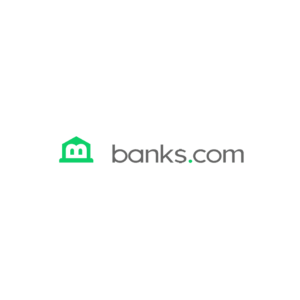High-yield savings accounts are the perfect way to meet your long term financial goals. Whether you are saving for a particular investment or simply looking to build your emergency savings, a high-yield or high-interest savings account offers a higher interest rate than a standard savings account, often with similar fees and balance requirements.
Benefits of High-Yield Savings
The benefits of a high-yield savings account are twofold. First, receive more interest back from your bank. Secondly, unlike risky stock investments, your savings account balance is insured by the FDIC (if you are using a bank)and by the NCUA (if you use a credit union), so your money is secured for up to $250,000. Before you decide to go with a traditional savings account or a high risk investment, take a look at some of the high-yield savings options available.
Best High-Yield Savings Accounts
If you already have a savings account, you can start by talking to your bank about getting an increased interest rate on your account. If they do not have the option or their rates are not competitive, consider shopping around for a better rate. For your reference, we have compiled the highlights of some of the best high-yield savings accounts for December 2019.
Vio Bank High-Yield Online Savings Account
- 42% APY
- $100 Minimum Opening Deposit
- No Monthly Fee
- No Minimum Balance Requirement
Marcus by Goldman Sachs High Yield Online Savings Account
- 0% APY
- No Minimum Opening Deposit
- No Minimum Balance Requirement
- No Monthly Fees
Popular Direct Ultimate Savings Account
- 40% APY
- $5,000 Minimum Opening Deposit
- $500 Minimum Daily Balance
- $4 Monthly Fee for any month in which daily balance falls below $500
BMO Harris Platinum Money Market
- 35% APY
- $5,000 Minimum Opening Deposit
- No Minimum Balance Requirement
- No Monthly Fees
Comenity Direct High-Yield Savings Account
- 25% APY
- $100 Minimum Opening Deposit
- No Minimum Balance Requirement
- No Monthly Fees
Additional Things to Consider
In addition to the basic fees and interest listed above, there are a number of items take into consideration before you open your high-yield savings account. Each financial institution has different agreement terms and account details, so read them thoroughly before you decide, to ensure that you are getting the best account for you saving needs. Some important things to double check when you are choosing your bank account include:
1. Changeable Interest Rates
Interest rates change based on the Federal Reserve and current market rates, and most banks will have a caveat in their terms indicating that the current rate is subject to change without notice based on the market. You may also sign up under a promotional interest rate, which may expire after the promotional period. Keep an eye on your statements, and do not hesitate to contact your financial institution if you see a change in your interest rate.
2. Extra Fees
Check the fee schedule for each account in detail. Fees can add up and cause you to spend more money than you are saving. Pay special attention to minimum balance requirements and transaction limits. Some banks will close your account if you frequently go over the transaction limit or remain below the account minimum for too long.
3. Transaction Limits
Federal Reserve Regulation D requires that banks allow a maximum of 6 transfers or withdrawals from your savings account per monthly billing cycle on deposit accounts, such as your high-yield savings. Your bank may have more transaction limitations than the Federal Reserve requirement, so double check terms with regards to transaction limits and fees. To avoid going over your limit, you should have a separate checking account to handle your regular expenses.
4. APR vs APY
When you review savings account information, you will often see an APR and an APY percentage. Both refer to the amount of interest accrued against your account balance, but with a difference based on compounding. To make a more educated decision, it is good to understand the difference between the two:
- Annual Percentage Rate (APR): Annual rate applied to your account. Does not account for compound interest.
- Annual Percentage Yield (APY): Annual percentage rate you can expect to receive with compounded interest taken into account.
5. Compound Interest Rate
Compound interest refers to the way that the interest on your account is applied to your balance. When the interest is “compounded”, it is added to the principal balance of your account, and all future interest calculations are based on that new total, thereby giving you a higher principal from which to calculate your interest. This is important to you because you want your interest income to be higher, the more frequently your interest is compounded, the higher your interest will be. Be sure to review your savings account terms for their interest compounding terms and time frames. Some accounts will compound your interest daily, while others will do it monthly or even annually.






